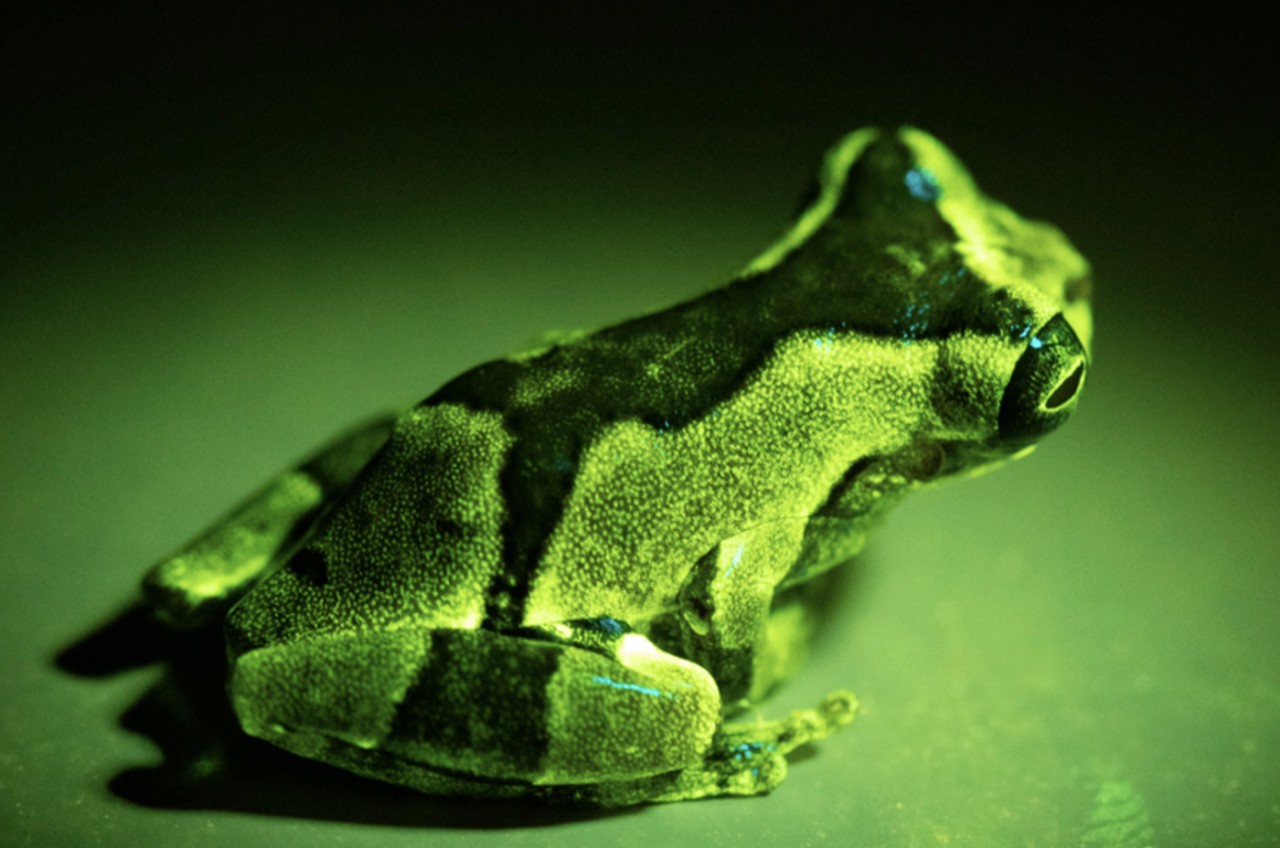
Atlas Obscura: Biologists threw a fluorescent frog rave for science
UC biologist explains why some frogs glow in the dark
Atlas Obscura turned to a University of Cincinnati doctoral student to explain why many frogs glow in the dark under certain light.
Amartya Tashi Mitra is studying the development of vision in UC Professor Elke Buschbeck's lab. Mitra said the evidence suggests biofluorescence is one way frogs communicate in a world in which they are most active at night.

UC doctoral student Amartya Mitra. Photo/Provided
Florida State University researcher Courtney Whitcher shared her discovery that many frogs are biofluorescent with Atlas Obscura. Whitcher has been studying the phenomenon in the rainforests of South America.
Mitra was not part of the study, which was published as a preprint in the journal bioRxiv.
“It also seems that the species that they found to fluoresce seem to be things like tree frogs with really big eyes,” Mitra told Atlas Obscura.
“It’s quite likely that those species are using their vision to perform complex tasks like signaling. They didn’t find this kind of fluorescence in aquatic species, which have much smaller eyes and live in murky waters, so it does seem that this is something that evolved by a sensory drive to serve a very specific purpose.”
Featured image at top: A frog glows under a black light. Photo/Santiago Ron
Related Stories
News Cincinnati loved in 2025
January 2, 2026
The story of prohibition bootlegger George Remus was among WLWT's favorite segments in 2025. UC Law Professor Christopher Bryant spoke with journalist Lindsay Stone about Remus using a temporary insanity defense during a murder trial.
What to know about this year’s big tax changes
January 2, 2026
Local 12 reported that taxpayers can expect some major changes this tax season. Gary Friedhoff, adjunct instructor at the University of Cincinnati’s Carl H. Lindner College of Business, recently spoke to Local 12 about how to avoid surprises.
Study finds police officers face higher long-term health risks
January 2, 2026
J.C. Barnes, a University of Cincinnati professor, is interviewed by Spectrum News about new research showing that the physical and psychological demands of law enforcement can contribute to earlier deaths.
